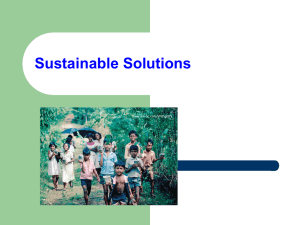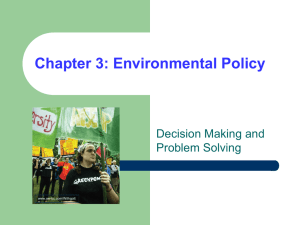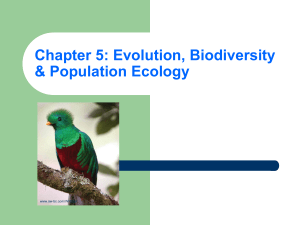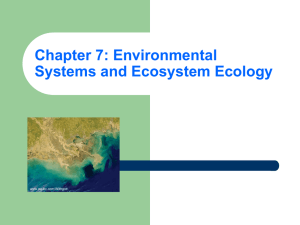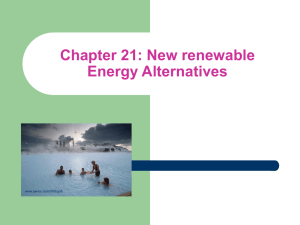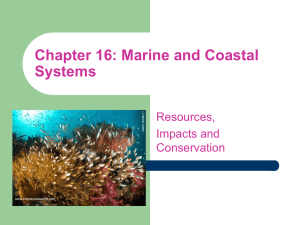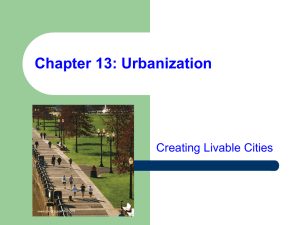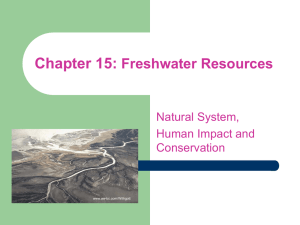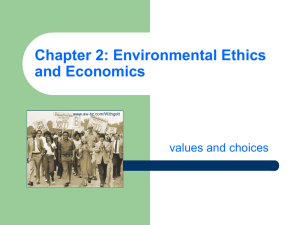Part 2: Environmental Issues and the search for solutions www.aw-bc.com/Withgott
advertisement
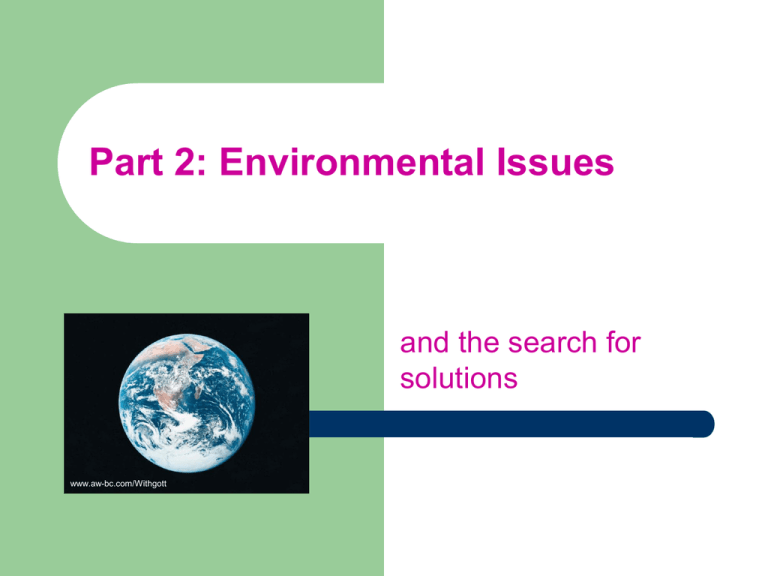
Part 2: Environmental Issues and the search for solutions www.aw-bc.com/Withgott Chapter 8: Human Population its approaching 7 billion population growth rate is at 1.2% www.aw-bc.com/Withgott U.S.Population Growth 2000-2012 U.S.Population Effect of Population on the Environment www.aw-bc.com/Withgott Population as a Factor that affect the Environment As population increases it takes more space, resources and generates waste IPAT model I= impact P= population A= affluence T= technology I=PxAxT Other factors to consider many factors could be considered but the most important ones are: Sensitive factor – – if the environment where the population is located is sensitive to human pressure, that factor (S) has to be considered as well I=PxAxTxS pollution resource consumption Effect of Population Growth on the Environment www.aw-bc.com/Withgott Demography study of human population environmental impact depends on – – – – density distribution technology composition Density and Distribution clumped distribution – highest in temperate, subtropical and tropical – – – cities and towns Europe China and India Africa lowest in extreme-climate biomes, have high S value in IPAT – – – desert tundra deep rainforest Age Distribution: low vs. high growth rate www.aw-bc.com/Withgott China www.aw-bc.com/Withgott US Baby Boomers and Echo Boomers www.aw-bc.com/Withgott Dallas Census Dallas Census www.censusscope.org Factors Affecting Population Growth birth rate – death rate – declined due to birth pill and education declines due to technology immigration and emigration – created environmental degradation in areas where war caused people to flee Rwanda genocide in the 80's Sudan civil war Total Fertility Rate Average number of children born per female individual, during lifetime Factors that lower the # -low children mortality rates -increasing urbanization -children impose costs -women in the workforce www.aw-bc.com/Withgott Life Expectancy average number of years a person is expected to live from birth. increase in life expectancy reduced rates of infant mortality – – – – urbanization industrialization personal wealth improved quality of life Demographic Transition www.aw-bc.com/Withgott Woman's Rights contraceptive availability education opportunities personal freedom of choice as a result children are better cared for as a consequence the environment is less affected www.aw-bc.com/Withgott Population Policies and Family Planning China- 1.3 billon people – India- 1 billion people – – one child policy since the 70s sterilization two child policy incentives education contraception reproductive health care Poverty Strongly Correlated with Population Growth www.aw-bc.com/Withgott Poverty vs Population Growth GNI= gross national income PPP= purchasing power parity www.aw-bc.com/Withgott Consumption from Affluent Societies can be equal or worse than a high density poor population affluent societies consume resources from other localities plus theirs larger footprints 1 American= 6 Chinese=12 Indians/Ethiopians humans live 25% above the environment's carrying capacity global sustainability is needed HIV/AIDS 67.5% of infected population is in the sub-Sahara desert high natality high mortality life expectancy dropped from 59 to 40 in the last decade Caribbean and Southeast Asia is next – 10 million expected to be infected between 2005-2010 Demographic Changes due to HIV/AIDS young productive citizens are affected by HIV/AIDS – – demographic fatigue – – – Zambia: 600 teachers die of AIDS, 300 are graduated per year Rwanda: 1:3 of the college educated are infected government is overwhelmed by demands stretched beyond capabilities government collapses and chaos arises THE END

